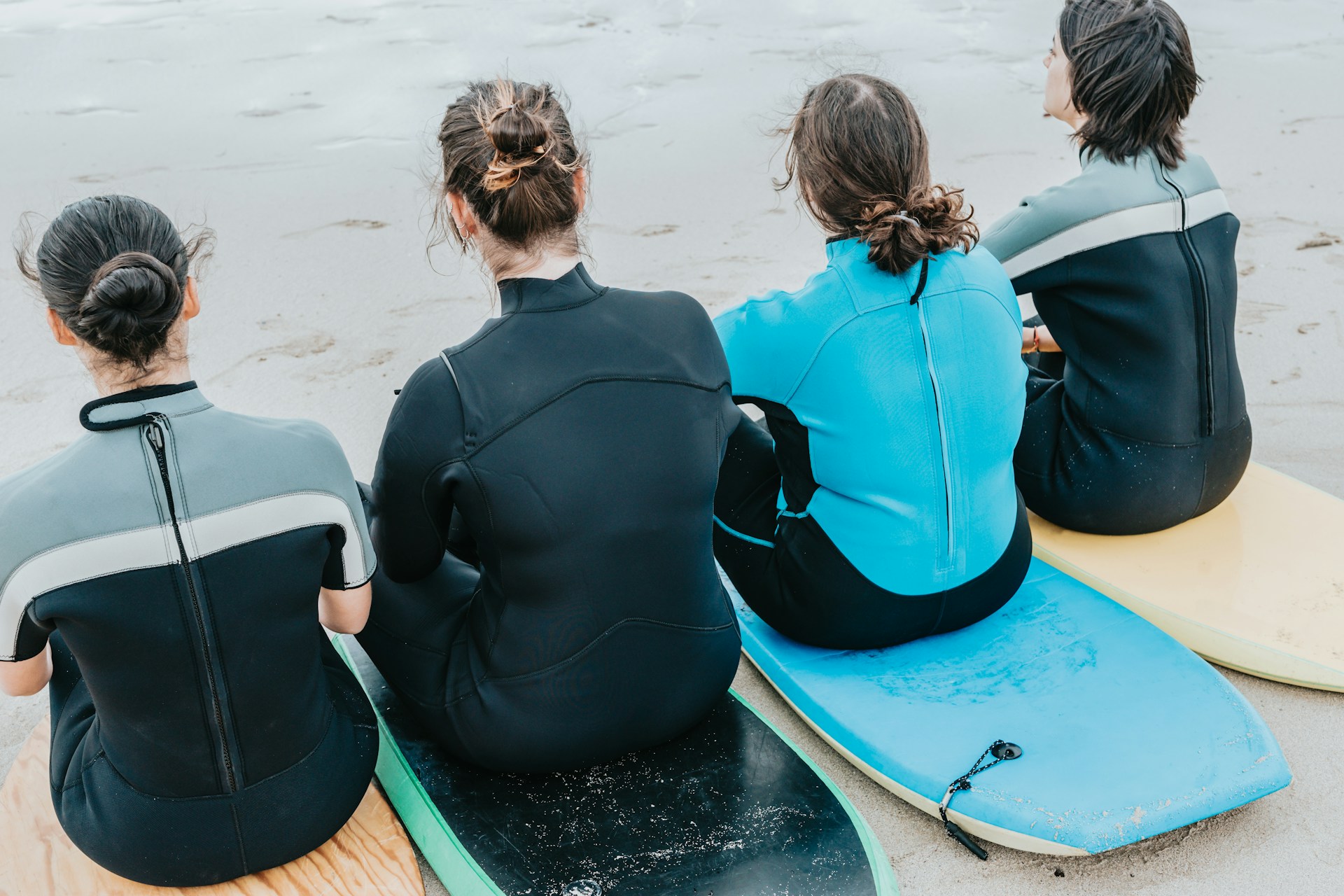Australia is a paradise for outdoor enthusiasts, offering various water-based activities, from surfing and diving to swimming and snorkeling. With its vast coastline, crystal-clear waters, and diverse marine life, it’s no wonder that wetsuits in Australia are an essential piece of gear for those looking to explore the Australian seas. Whether you’re a seasoned surfer or a first-time swimmer, understanding wetsuits in Australia can enhance your experience in the water and ensure comfort, warmth, and safety.
What Are Wetsuits and Why Are They Essential in Australia?
A wetsuit is a close-fitting garment made from neoprene, a synthetic rubber that provides thermal insulation by trapping a thin layer of water between the suit and the skin. The body warms this layer, offering protection against cold temperatures, which is especially important for those diving or surfing in cooler waters.
In Australia, the need for wetsuits depends largely on the water temperature, which varies across the country’s vast coastline. While the tropical waters in the north can be warm year-round, southern regions can experience much cooler waters, particularly during the winter months. Wetsuits not only help maintain body temperature but also offer protection from the sun, stingers (jellyfish), and rough marine environments.
Types of Wetsuits for Australian Waters
There are several types of wetsuits designed to cater to different water activities and temperature ranges. Here are the most common types you’ll find in Australia:
1. Full Wetsuits
o Best for: Surfing, diving, and general water sports.
o Description: Full wetsuits cover the entire body, from neck to ankles, providing maximum warmth and protection. They are typically worn in colder waters (16°C to 22°C). In Australian waters, full wetsuits are ideal for activities in the southern regions or during winter months when temperatures can drop.
2. Shorty Wetsuits (Spring Suits)
o Best for: Surfing, snorkeling, and warm-water diving.
o Description: These wetsuits have short sleeves and legs, providing less coverage than full wetsuits. They are perfect for warmer waters (22°C and above). In northern Australia or during summer months, a shorty wetsuit offers the perfect balance between comfort and protection.
3. Rash Guards and Dive Skins
o Best for: Swimming, snorkeling, and diving in warm waters.
o Description: Rash guards are lightweight, form-fitting tops made from spandex or Lycra. While not technically a wetsuit, they provide sun protection and prevent chafing during extended water activities. Dive skins offer full-body protection against sunburns and marine life stings but offer little to no thermal insulation.
4. Drysuits
o Best for: Cold-water diving and extreme temperatures.
o Description: Drysuits are not common for general recreational use in Australia but are used by divers in colder waters, particularly in the southern parts of the country or during winter dives. These suits keep you completely dry, relying on layers of thermal insulation to keep you warm.
Water Temperature in Australia
Australia’s vast coastline means that the temperature of its waters varies significantly from region to region, which impacts the type of wetsuit you’ll need. Here’s a breakdown of the water temperatures you can expect in different regions:
· Northern Australia (Queensland and Northern Territory): The waters here are warm year-round, ranging from 26°C to 30°C (79°F to 86°F). A rash guard or shorty wetsuit is typically sufficient for most activities.
· Central Australia (New South Wales and Queensland): During the summer months, water temperatures hover around 22°C to 26°C (72°F to 79°F), but during winter, it can drop to 18°C to 22°C (64°F to 72°F). A shorty wetsuit is perfect for summer, but a full wetsuit might be required during the cooler months.
· Southern Australia (Victoria, Tasmania, South Australia): These waters are cooler, especially during winter, where temperatures can drop to 12°C to 18°C (54°F to 64°F). A full wetsuit, sometimes with a hood, is essential for comfort and safety in these regions.
· Western Australia: The waters off the coast of Western Australia can vary from 18°C in the cooler months to 23°C in summer. Depending on the season, you’ll need a shorty wetsuit or a full wetsuit.
How to Choose the Right Wetsuit for Australian Waters
Choosing the right wetsuit depends on several factors, including the water temperature, the type of activity, and personal comfort preferences. Here are a few tips to help you choose:
· Water Temperature: The key determinant for wetsuit thickness is water temperature. In general, thicker wetsuits (5mm to 7mm) are needed for colder waters, while thinner suits (2mm to 3mm) are better suited for warmer climates.
· Fit: A wetsuit should fit snugly without being too tight. You want the suit to be tight enough to trap a thin layer of water for insulation but not so tight that it restricts your movement or causes discomfort. Most wetsuit manufacturers offer a range of sizes and styles designed for men, women, and children.
· Activity: The activity you plan to do will influence your choice. Surfers may prefer more flexibility in their wetsuits to allow for easy movement, while divers may opt for thicker suits with added insulation.
· Material: While neoprene is the most common material used in wetsuit construction, some wetsuits feature environmentally friendly or more flexible materials, such as limestone neoprene or eco-friendly coatings. If you’re eco-conscious, look for wetsuits made with sustainable practices.
Conclusion
Whether you’re surfing the waves of Bondi Beach, diving in the Great Barrier Reef, or simply enjoying a swim in the ocean, having the right wetsuit is essential for comfort, safety, and performance. With Australia’s diverse marine environments, there’s a wetsuit for every need and every water condition. By understanding the different types of wetsuits available and the water temperatures across the country, you’ll be better prepared to enjoy your aquatic adventures in the land Down Under.



































